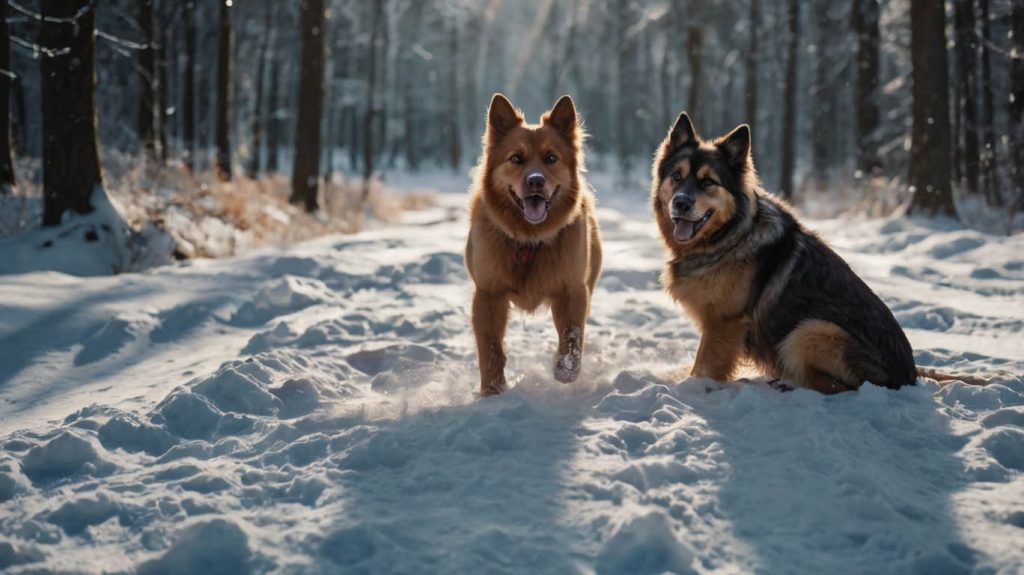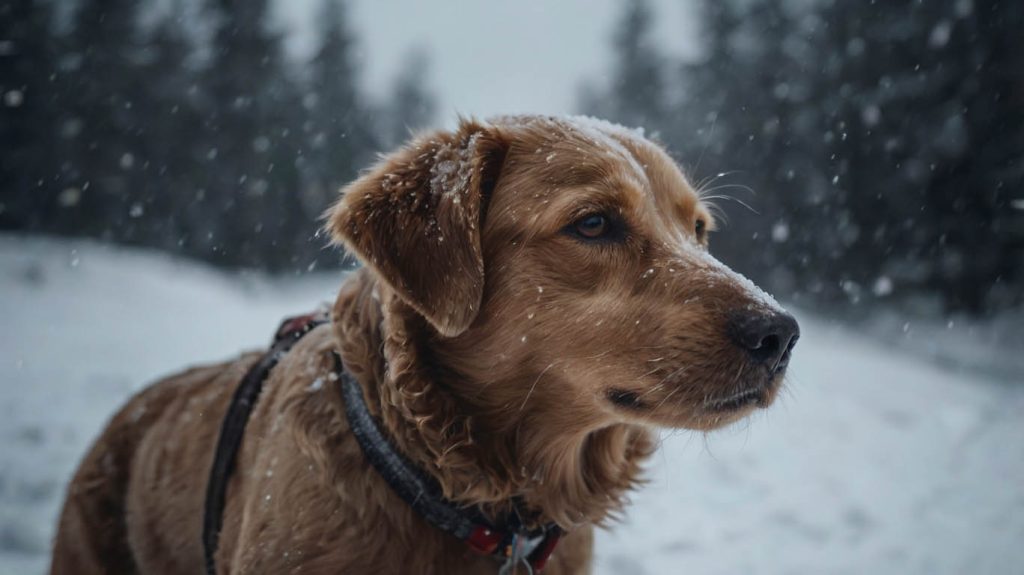Winter Care for Dogs: The Ultimate Guide to a Safe and Happy Season
The first snow of the season dusts the world in a pristine layer of white. You pull on your warm coat, eager to enjoy the crisp air, and your dog is doing excited spins by the door. But as you reach for the leash, a thought stops you: Is it too cold? Are their paws safe? This moment is where a solid plan for winter care for dogs becomes essential. While many dogs love the snow, the cold, ice, and hidden dangers of the season require special attention from us.
In fact, ensuring your dog’s safety is about much more than just assuming their fur coat is enough. It involves a proactive approach to their health, comfort, and environment. This guide will walk you through every critical aspect of proper winter care for dogs. Consequently, you will be fully equipped to protect your companion from the elements, allowing you both to enjoy the magic of the season without worry.
Why Is Comprehensive Winter Care for Dogs So Crucial?
Before we dive into the specifics, it’s vital to debunk a common myth: not all dogs are built for the cold. A dog’s breed, size, age, and overall health dramatically affect their ability to tolerate chilly temperatures. A Siberian Husky may feel right at home in a blizzard, but a Chihuahua or Greyhound can be at risk in minutes. Therefore, understanding the potential dangers is the first step in effective winter care for dogs.
The primary risks include hypothermia (a dangerous drop in body temperature), frostbite (tissue damage from freezing), and chemical poisoning from ice melts and antifreeze. By being knowledgeable and prepared, you can prevent these serious issues and ensure your dog remains healthy and happy all winter long.

Essential Outdoor Winter Care for Dogs
Your outdoor routine will see the most significant changes during the cold months. Here’s how to prepare for safe and fun adventures outside.
Paw Protection: A Top Priority for Winter Care for Dogs
A dog’s paws are their direct point of contact with the frozen ground, making them incredibly vulnerable. They face a triple threat: ice balls forming between the toes, chemical burns from salt and de-icers, and the sheer cold of the pavement.
- Dog Boots: For many dogs, boots are the best all-around solution. They provide a physical barrier against all threats. When choosing boots, look for a secure fit (so they don’t fall off) and a flexible sole for traction. Introduce them gradually and positively with lots of treats.
- Paw Balm/Wax: If your dog refuses to wear boots, a high-quality paw balm is a great alternative. Applied before a walk, it creates a semi-permeable barrier that helps protect against salt and prevents paws from drying out and cracking.
- Wipe-Downs are Non-Negotiable: This is a critical step in winter care for dogs. After every single walk, wipe your dog’s paws, legs, and belly with a warm, damp cloth. This removes toxic de-icing chemicals, salt, and any ice balls, preventing them from licking the chemicals off or suffering from skin irritation.
The Great Coat Debate: Essential Gear for Winter Care for Dogs
Does your dog actually need a winter coat? The answer depends entirely on the dog.
- Breeds That Usually Need Coats: Short-haired breeds (like Greyhounds, Whippets, and Vizslas), small and toy breeds (like Chihuahuas and Yorkies), senior dogs with weaker immune systems, and dogs with lean body masses will almost certainly benefit from a warm, waterproof coat.
- Breeds That Typically Don’t: Northern, double-coated breeds like Siberian Huskies, Alaskan Malamutes, and Samoyeds are genetically equipped for the cold and generally do not need a coat. In fact, putting a coat on them can sometimes lead to overheating.
- Choosing the Right Coat: Look for a coat that provides good coverage of the chest and belly. It should be waterproof or at least water-resistant, fit snugly without restricting movement, and be easy to put on and take off.
Recognizing and Preventing Hypothermia and Frostbite
Knowing the warning signs of these dangerous conditions is a cornerstone of responsible winter care for dogs.
- Hypothermia Symptoms: Look for intense shivering, lethargy or weakness, pale or blue gums, stumbling, and slow breathing. If you suspect hypothermia, bring your dog inside immediately, wrap them in warm blankets, and call your veterinarian.
- Frostbite Symptoms: Frostbite most commonly affects extremities like the paws, tail, and ear tips. The skin may appear pale, gray, or blueish and feel cold or brittle. As the area warms, it can become red, swollen, and painful. Seek veterinary care immediately.
- Prevention: The best prevention is limiting exposure. On frigid days, keep walks short and playful. Pay close attention to your dog’s body language; if they start lifting their paws, shivering, or slowing down, it’s time to go inside.

Indoor and Health-Related Winter Care for Dogs
Winter safety doesn’t end when you walk through the door. Your dog’s indoor environment and health routine also need adjustments.
Adjusting Nutrition and Hydration for Proper Winter Care for Dogs
Many owners wonder if they should feed their dog more in the winter. The answer is: it depends.
- Calorie Adjustments: A dog who is still very active outdoors may need a slight increase in calories to help them stay warm. However, a dog whose activity level drops significantly may actually need fewer calories to prevent winter weight gain. Monitor your dog’s body condition and adjust their food as needed.
- Hydration is Still Key: Dogs can get just as dehydrated in winter as in summer. Ensure they always have access to fresh, unfrozen water. If you have an outdoor water bowl, use a heated one to prevent it from freezing over.
Combating Hidden Dangers: At-Home Winter Care for Dogs
Your warm and cozy home can harbor its own set of winter dangers.
- Antifreeze is Extremely Toxic: Antifreeze often contains ethylene glycol, which has a sweet taste that is attractive to dogs but is lethally toxic, even in tiny amounts. Clean up any spills from your car immediately and thoroughly. Store all containers securely out of reach. This is one of the most important aspects of winter care for dogs.
- Heaters and Fireplaces: A cozy fire is a winter delight, but it poses a burn risk. Use a fireplace screen to keep your dog at a safe distance. Similarly, be mindful of space heaters that can be knocked over or cause burns if a dog lies too close.
Beating the Winter Blues with Indoor Enrichment
When the weather is too harsh for long walks, your dog will need other outlets for their energy.
- Indoor Games: Engage your dog with fun indoor games like “find it” (scent work), puzzle toys, and indoor fetch with a soft toy.
- Training Sessions: Winter is the perfect time to work on new tricks or brush up on obedience skills. A 15-minute training session provides excellent mental stimulation that can be just as tiring as a physical workout.
Conclusion: Your Partner in Winter Wellness
Proper winter care for dogs is a blend of vigilance, preparation, and common sense. By taking these steps—from protecting their paws and providing the right gear to ensuring a safe indoor environment—you are being your dog’s best advocate. You’re ensuring that the winter season remains a time of joy and shared adventures, not one of risk and discomfort. So bundle up, be prepared, and go enjoy the beauty of the season with your happy, healthy companion.
What’s your number one winter safety tip for your dog? Share your advice and favorite winter gear in the comments below!


